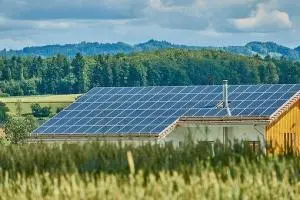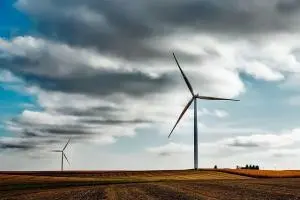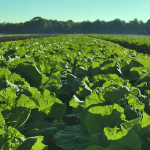The Best Renewable Energy Sources for Sustainable Farming
The Best Renewable Energy Sources for Sustainable Farming

Many sustainable farms are choosing to adopt a renewable energy source to power the farm – and sometimes are even profiting from it! Renewable energy and sustainable farming is a great combination because farmers can use their energy source as their new “cash crop” or use it instead of other fuels on their farm. Choosing a source of renewable energy helps farms to commit more fully to the principles of sustainable farming, as renewable energy could help to reduce global warming and pollution.
Choosing an Energy Source for Your Sustainable Farm
While it may seem like a daunting task to choose the right form of alternative energy for your sustainable farm, farmers can’t go wrong with any of these options. The principles of sustainable farming include economic sustainability, so farmers should choose an alternative energy source that will help them to be profitable. The best energy source depends on the needs and location of your sustainable farm. Farmers should take into consideration their local renewable resources, the types of assistance provided by their state government, and the needs of their local energy market.
Bioenergy
Bioenergy is a renewable energy from plants and organic wastes that can be used for a variety of purposes – for vehicle fuel, heat, or electricity. Bioenergy from plants is one of the fastest growing sources of renewable energy! Many farmers choose bioenergy because of the wide range of plant- and algae-based materials that can be used. This gives farmers freedom, and also means sustainable farms can turn crop, industrial, and food waste into energy! Corn is currently the most widely used crop for bioenergy, but native prairie grasses and fast-growing trees are growing in popularity.
If you’re looking for a source of renewable energy that will allow you to produce liquid gasoline and diesel to power vehicles and farm equipment, bioenergy is the best option. In fact, bioenergy is the only renewable way of producing liquid vehicle fuel in the short term. Bioenergy is also a great choice for farmers who want to make extra money off of their energy source, as it can be used to power the grid and the process creates a valuable chemical that can be sold to manufacturers.
Solar Energy
 Many farmers who have adopted sustainable farming techniques have embraced solar energy, installing solar panels on their roofs and in their fields. Solar energy can be used to provide electricity and heat for the farm, dry crops, and heat livestock buildings. Sustainable farmers can also passively embrace solar energy – that is, use the sun even without solar panels – by renovating barns so that they capture natural light throughout the day.
Many farmers who have adopted sustainable farming techniques have embraced solar energy, installing solar panels on their roofs and in their fields. Solar energy can be used to provide electricity and heat for the farm, dry crops, and heat livestock buildings. Sustainable farmers can also passively embrace solar energy – that is, use the sun even without solar panels – by renovating barns so that they capture natural light throughout the day.
Solar energy is likely to be the best choice of renewable energy for sustainable farms in desert areas like Arizona and Nevada, as those areas get the most sun of any area of the United States. Even outside these areas, though, these is generally enough sunlight each day to make solar energy a practical alternative energy source.
Wind Energy
 Wind energy is transforming sustainable farming by providing a huge influx of cash to the industry. The US Department of Energy estimates that wind energy could create 80,000 new jobs and provide up to $1.2 billion in new income to farmers by 2020. Farms historically used windmills to pump water and mill grain, and more recently farmers have embraced wind energy for generating electricity.
Wind energy is transforming sustainable farming by providing a huge influx of cash to the industry. The US Department of Energy estimates that wind energy could create 80,000 new jobs and provide up to $1.2 billion in new income to farmers by 2020. Farms historically used windmills to pump water and mill grain, and more recently farmers have embraced wind energy for generating electricity.
Sustainable farms can easily generate extra income by buying wind turbines and selling power to electric companies to provide to consumers. In many areas, developers will pay for wind turbines to be put on sustainable farms, then will pay the farmer $2,000 to $5,000 per turbine every year. Wind energy pairs well with sustainable farming because each turbine takes up less than half an acre and crops can be planted right up to the base of the turbine.
Browse Organic Farms for Sale
















































